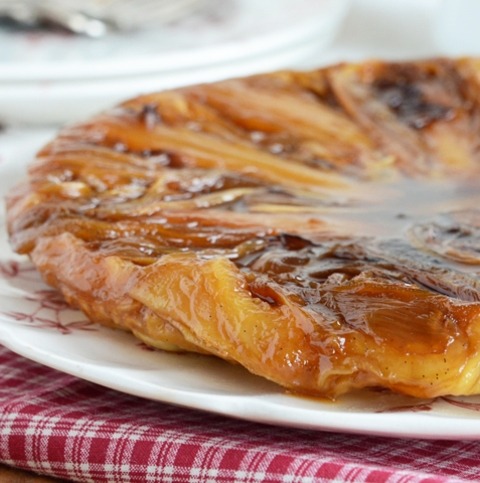#belgian endive
Explore tagged Tumblr posts
Photo
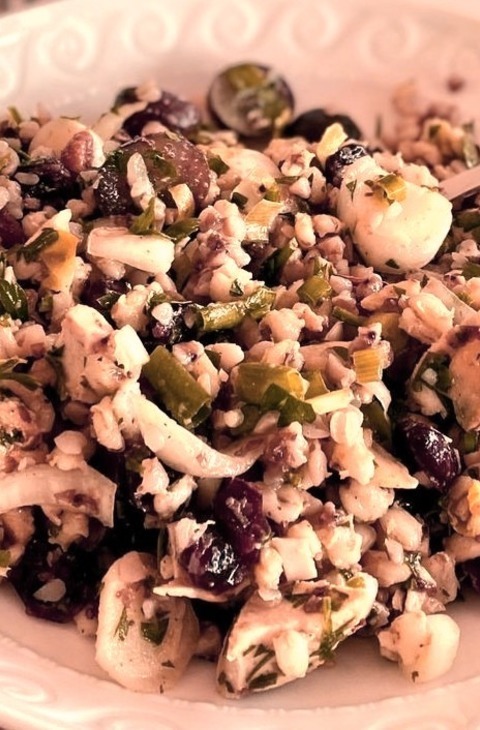
Recipe for Chicken, Belgian Endive, and Grape Grain Salad Early fall flavors like grapes and cranberries are incorporated into this hearty, light grain salad with chicken and endives. It also makes excellent use of ancient grains like barley and buckwheat.
0 notes
Photo
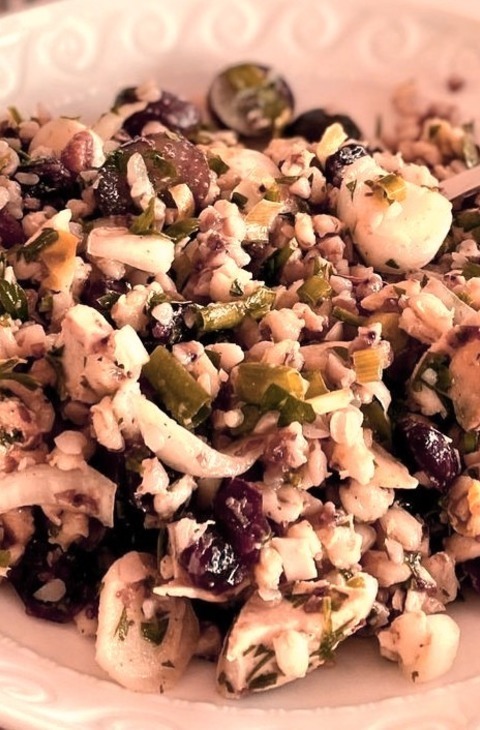
Chicken, Belgian Endive, and Grape Grain Salad Early fall flavors like grapes and cranberries are incorporated into this hearty, light grain salad with chicken and endives. It also makes excellent use of ancient grains like barley and buckwheat.
0 notes
Text
> want to make lunch pretty quickly
> I'll caramelise some onions
#but i also made an experiment that turned out really well imo!#second time i ate and first time i cooked belgian endive and i decided to marinate and grill it without seeing any recipe about it#(microwaved it in between cause i was worried it couldn't stay on the grill enough to properly cook)#i even reduced the marinade to make a bit of a glaze i feel like a chef lol
2 notes
·
View notes
Photo
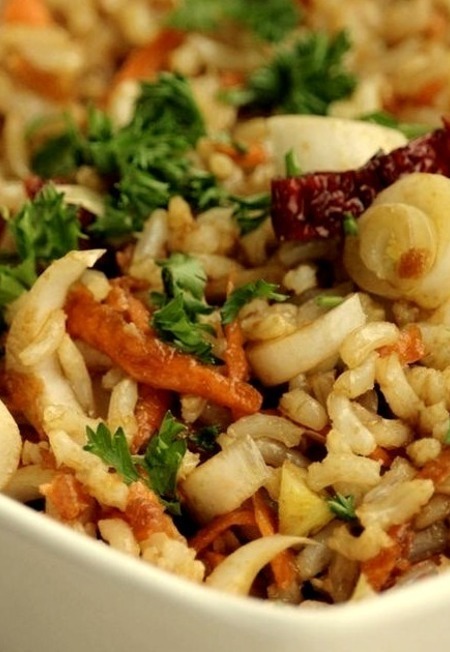
Salad - Brown Rice Belgian Endive Salad In order to make this filling salad, brown rice is combined with endive and onion. For variety, mix in your favorite fruit.
0 notes
Photo
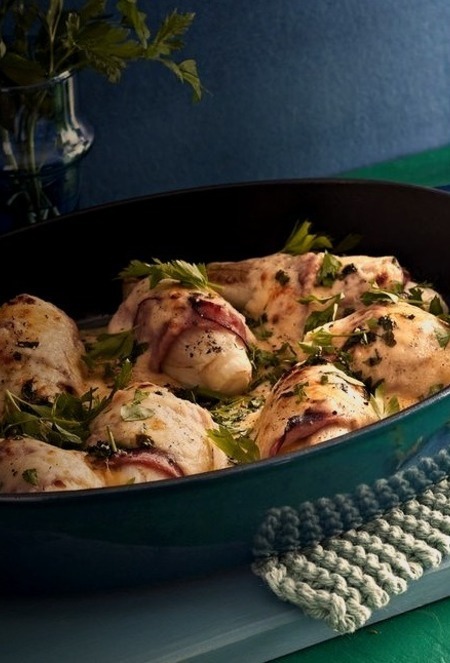
Belgian Endive au Gratin Recipe Versatile Belgian endive are dressed up and ready to serve for any special meal when they are broiled in a traditional Belgian dish and topped with a creamy Gruyere-Parmesan cheese sauce. 1/4 cup chopped fresh parsley, 2 tablespoons butter, 8 slices deli-style ham, 2 tablespoons all-purpose flour, 2 teaspoons grated Parmesan cheese, salt and ground black pepper to taste, 1 cup grated Gruyere cheese divided, 1 cup milk, 8 heads Belgian endive trimmed, 1/4 teaspoon ground nutmeg or amount to taste
0 notes
Photo
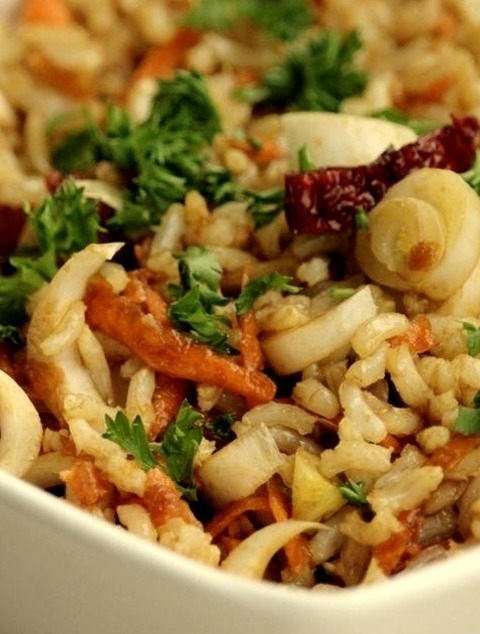
Recipe for Brown Rice Belgian Endive Salad In order to make this filling salad, brown rice is combined with endive and onion. For variety, mix in your favorite fruit. 1/2 cup uncooked brown rice, 1 tablespoon extra-virgin olive oil or to taste, 2 tablespoons balsamic vinegar, 1 head Belgian endive chopped, 1 cup water, salt and ground black pepper to taste, 1/8 red onion finely chopped
1 note
·
View note
Text
Salmon Mousse in Belgian Endive Boats
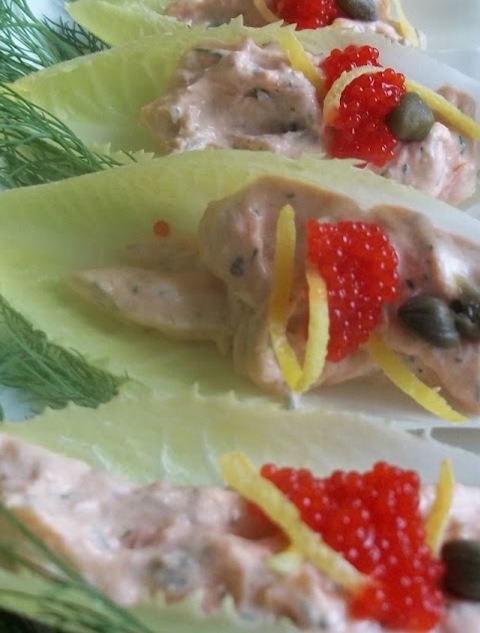
0 notes
Photo
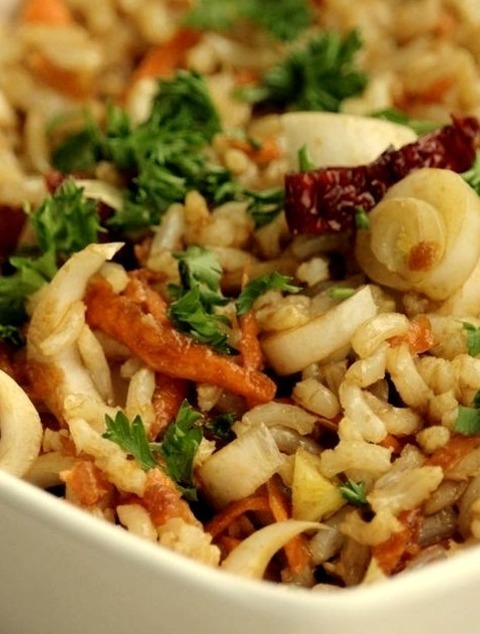
Recipe for Brown Rice Belgian Endive Salad Brown rice is tossed with endive and onion to make this filling salad. Add your favorite fruit for variety.
0 notes
Text
Belgian Endive au Gratin Recipe
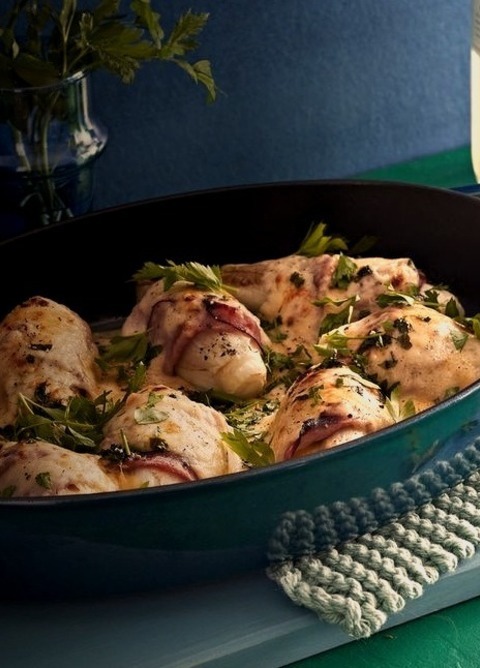
Versatile Belgian endive are dressed up and ready to serve for any special meal when they are broiled in a traditional Belgian dish and topped with a creamy Gruyere-Parmesan cheese sauce.
0 notes
Text
For summer afternoons: Shipper Mom's Lazy Apricot Tart (feat. whisky)
Unlike me, Shipper Mom is not a cook and bless her, never pretended to be one. She has no patience and a #silly hidden talent for cutting or burning herself almost every time she tries to prepare something, against her better judgement.
However, I must immediately add that she has perfected three things up to sublime levels: omelets, Belgian endive/chicory salads and a couple of tarts (for which she joyfully cuts all corners that can be cut).
Her Lazy Apricot Tart, a French recipe fished out of the Femme Actuelle magazine sometimes around the Stone Age, has always been a summer staple in our house. Again, a 5 year old could make it in about 10 to 15 minutes, plus baking time (minimal). It requires nothing more than the basics. And it is to die for.
You will need:
250 grams/ half a pound seasonal apricots (ripe, but still firm); 1 sheet of store bought puff pastry; roughly 4 Tsp/60 grams caster sugar (or, even better, brown sugar/cassonade); a hefty dash of whisky; lime juice (optional).
Preheat the oven (medium heat). About 350 Fahrenheit/180 Celsius will do.
Cut apricots in half, remove stones.
Unroll the puff pastry in a properly prepared sheet pan. Cut it in squares, in the pan, before baking.
Place half an apricot on each square, cut side up. Add about half a teaspoon sugar and a bit of whisky on every apricot (fill in the stone hollow completely). Whisky-wise, I recommend a basic blended one. The Famous Grouse is the best I can think of, and a fixture in my kitchen: it was tipped to me by a Swiss family friend who used to be a Nestlé food chemistry executive - I have never looked back. You can add a dash of lime juice on top, if you feel adventurous - I know I always do. Today, we had an exceptional sample of single malt (you know who you are, 😘) and I find it's elevating it immediately. Predictable, really.
Bake for 15 to 25 minutes, until golden brown and properly caramelized, depending of your own oven's whims (mine is exactly like Shipper Mom, has zero patience). Let cool. Serve with confidence and watch the magic in action:
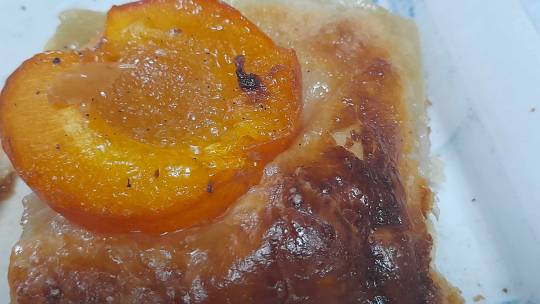
You're welcome.
92 notes
·
View notes
Text
Vegetables I Enjoyed 2024
zuchinni (raw)
escarole
romaine lettuce
butter/boston lettuce
curly endive
belgian endive
persian cucumber
17 notes
·
View notes
Text
Felt homesick, decided to make a character sheet for myself. We be copin /lh
I'll update this probably
╔════════ Basics ════════════ ╠ Name: Kai Wanderwitt ╠ Earthly Zodiac Sign: Sagittarius ╠ Gender: genderfluid ╠ Gender presentation: very fluid ╠ Pronouns: any ╠ Orientation: demisexual, panromantic, polyamorous ╠ Species: shapeshifter ╠ Dynamic: tridynamic ╠ Scent: orange and cedar
╠═══════ Appearance ════ ╠ Height: Short king (like 1m55) ╠ Eye color: left eye is green, right one is purple (void magic infused); both change hues when his emotions shift ╠ Body Mods: sometimes they dye their hair; they've got magic-infused tattoos, all over that shift with life, they change hues depending on his mood; they've got angel fangs piercing (and some on their ears) ╠ Scars: two square in the chest, nearly forms an 8, one on the hip, and multiple littler ones ╠ Default form: humanoid; black crow wings; sometimes claws and dog ears. ╠ Favourite Forms: australian shepherd, cockatiel, crow, bat and satyr. ╠═══════ Personality ═════ ╠ Green Flags: remembers little details about people they love; very in tune with animals ╠ Negative traits: a plan? what plan?; impulsive; self-sacrificing ╠ MBTI: ENP(-T) - Campaigner ╠ Enneagram: Type 4w5 ╠ Alignment: Chaotic Good ╠ Archetype: The Fool ╠ Tarot Card: The Hanged Man ╠ Crystal: Turquoise ╠ Animal: Dog ╠ Flower: Carnation ╠ Plant: Arrowhead ╠ Element: Fire ╠═══════ Tastes ════════ ╠ Favourite food: most teas and infusions, coffee; pasta with cream sauce with broccoli, pizza, french tacos ╠ Most hated food: red meat, belgian endives, cabbage ╠ Favourite color: green, purple, yellow, teal ╠ Favourite plant: weeping willow ╠ Favourite flower: birds of paradise ╠ Favourite scent: old books and coffee ╠ Favourite animal: bats and foxes ╠ Favourite weather: rainy days ╠ Favourite crystal: citrine ╠ Hobbies: art (performance arts are his faves), gardening, cooking, learning (folklore, history, science,...), phytotherapy ╠═══════ Health ════════ ╠ Neurodiversity: autism, adhd, borderline, bipolar, c-ptsd ╠ It's all autism??: stims a lot, echolalia ╠ Biggest Struggles: sensory issues; hates ticking sounds ╠ Disabilities: chronically fatigued, chronic back, hips and leg pain from one of said legs being shorter than the other; needs a soul stabiliser since their incident with the Void or they'll glitch out ╠═══════ Magic ════════ ╠ Birth: / ╠ Magic's Origin: experiments "augmented" him (higher constitution) when they were a toddler; communed with the Void while trying to pull someone out of it ╠ Magic: illusion, light reality bending, bardic inspiration (influence emotions and the world with music/performance), healing, sees and senses souls/intentions/emotions ╠═══════ In World ═══════ ╠ Role in the Sanctuary: gardens, teaches some magic to kids, cooks, heals, maintains tombs, takes care of animals on the property ╠ Team: / ╠═══════ Picrews ═══════
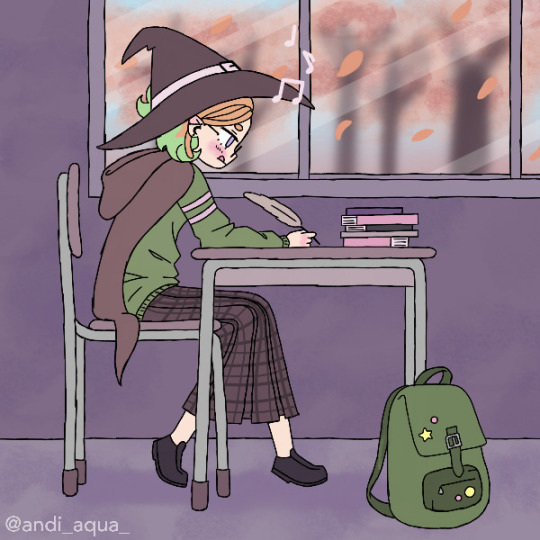





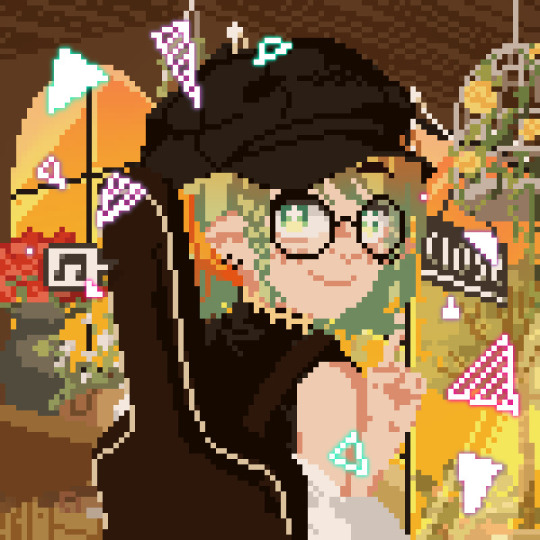
╠═══════ Animal forms ═══════

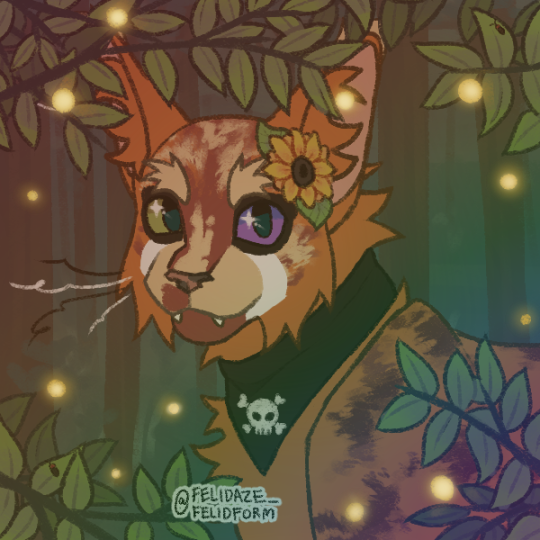
╠═══════ Media!Kai ═══════

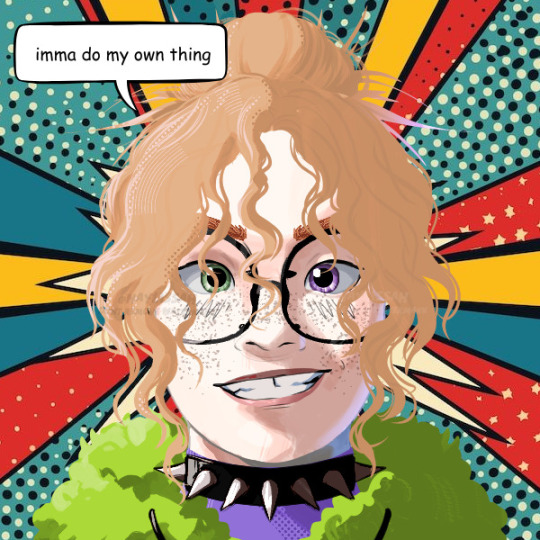
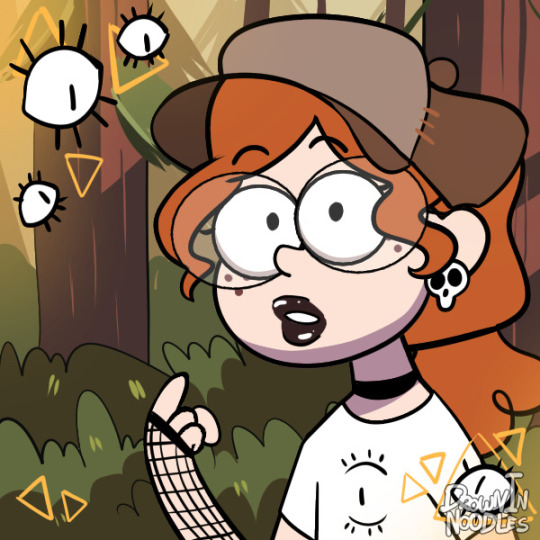
╚═════════════════════════
#kaotikai#kai's true self#paraself#xenreve#shapeshifterkin#shapeshifter kin#otherkin#fictionkin#fictionfolk#ockin#transfictional#transoc#transcharacter#transspecies#daydreaming spectrum#maladaptive daydreamer#immersive daydreaming#immersive daydreamer#madd paras#paraportal#paracosm#character sheet#oc#?
7 notes
·
View notes
Note
4, 11 & 13 for the ask game! 💜
4. favourite dish specific for your country?
Fries may seem like an obvious option but specifically for a dish I may just choose Belgian endive rolled in ham in a cheese sauce. It's a very typical dish and if you do the cheese sauce right it's so delicious
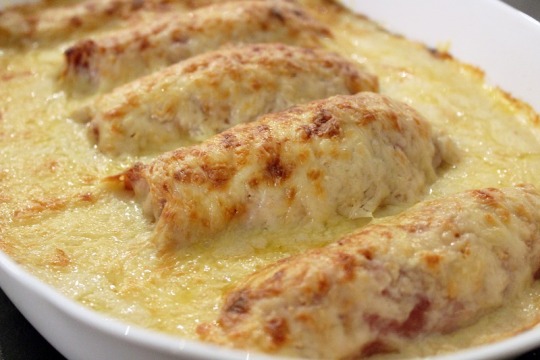
11. Favourite native writer/poet
Marc De Bel, who writes children's books. His books were the first I devoured and was important in making me love reading.
13. does your country (or family) have any specific superstitions or traditions that might seem strange to outsiders
There is a tradition that when the song 'Le Lac du Connemara' comes on during a wedding, we all pick up our napkins and swish it around for the duration of the song (and you hope the DJ takes mercy on you because it's 6 minutes long!). This song is about the lakes of the Connemara, a region in Ireland, sung by a Frenchman, and there is absolutely zero logic behind this tradition.
“hi, I’m not from the US” ask set
11 notes
·
View notes
Text
I enjoy analyzing the real-life origins and inspirations for Pokémon. Because I’m a marine biologist, I have so far covered the origins of all fish Pokémon and all other aquatic Pokémon, but I did not cover starters. That’s because I’m going to go over them separately. Welcome to the first of a three-part series analyzing and explaining the real-life origins of all the grass-type starters.
Gen I gives us the template for all grass starters going forward: Bulbasaur. As the first Pokémon line in the dex, it introduces a lot of trends, such as the concept of evolution and how the different stages appear to be more mature versions of the ones before them. Bulbasaur and its evolutions are most directly based on frogs, but they also take influence from a number of other creatures. In fact, what the -saurs are supposed to be has been a matter of debate amongst the fandom for quite a while. Given that Bulbasaur’s Japanese name can be translated as “it seems strange”, the ambiguity seems intentional. The biggest thing people seem stuck on when it comes to the frog origin is how their legs are so short and don’t take on the classic frog leg pose. The stubbiness of their legs is similar to those of the genus Ceratophrys, also known as dwarf frogs or pacman frogs.

(image: a roundboi dwarf frog from the front)
The line also has similarities to extinct species like pareiasaurs or certain dicynodonts (therapids notable for protruding tusks, similar to the exposed teeth of the Bulbasaur line). Given that the early generations did often make some obscure paleontology references, it certainly isn’t beyond the realm of possibility that these were intentional.

(image: paleoart of the dicynodont Dicynodontoides. Art by Dmitry Bogdanov)
Of course the Bulbasaur line are both plant and animal. The bulb on its back matures while the animal evolves, going from a bud in Bulbasaur, to an almost mature flower in Ivysaur, to a fully bloomed flower in Venusaur. The leaves on all three look like palm fronds and Venusaur’s flower looks like the real-life Rafflesia arnoldii, the largest flower in the world.

(image: a Rafflesia arnoldi being measured by a human. Each petal is wider than his head)
Mega and Gigantamax Venusaur don’t stray far from the original, just being exaggerations of Venusaur rather than incorporating new influences. I found conflicting accounts of the line’s designs. One interview with Ken Sugimori and Atsuko Nishida states that Venusaur was designed first with the other two being designed backwards from it. Another source states that Ivysaur came first, being included in Capsule Monsters, Satoshi Tajiri’s original pitch to Nintendo that would ultimately develop into Pokémon.
Gen II gave us probably the most-maligned grass starter, Chikorita. People give it shit for having the worst gym matchup of possibly any starter in the franchise in its debut games and for the line remaining cute all the way through. I like the design personally, but that gym matchup really shot it in the foot. The whole line are based on sauropod dinosaurs, the famous long-necks like Apatosaurus and Brachiosaurus.

(image: a fossil reconstruction of a Brachiosaurus)
The combination of plant and dinosaur could be a reference to Nicolia aegyptiaca, a type of fossilized wood that was initially mistaken for a piece of dinosaur jawbone. While Bayleef and Meganium have the classic sauropod neck, Chikorita’s is shorter, making it look kind of like a pear or a Belgian endive. The endive origin is more likely considering it is a type of leaf chicory, which is the origin of Chikorita’s name.
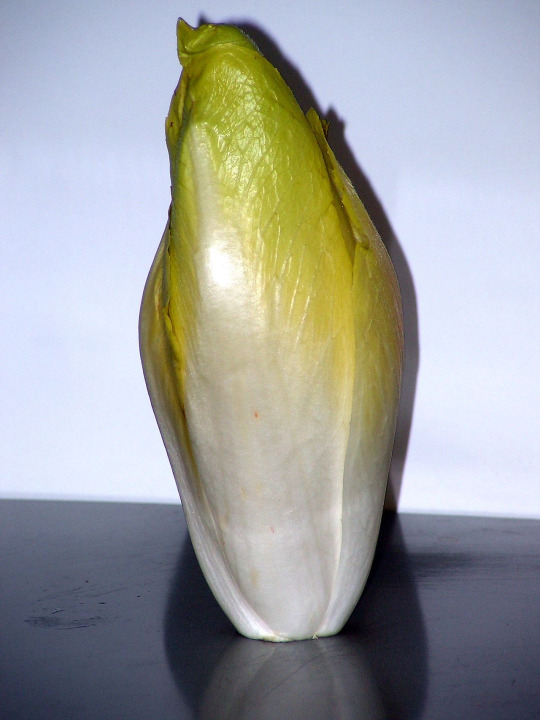
(image: a Belgian endive)
Bayleef’s name is a dead giveaway that the leaves around its neck are bay leaves. These are aromatic leaves used for seasoning and aromatherapy. Specifically it is based on a bay laurel, the most commonly used bay leaf. Bayleef having a very strong, spicy odor references the aromatic nature of bay leaves and their use in aromatherapy. The flower petals on Meganium’s neck are probably based on geraniums, the origin of Meganium’s name. In addition, a ring of flower petals with a long, green stalk in the center is reminiscent of Amorphophallus titanium, the corpse flower. Meganium’s antennae are based on a flower’s stamen.

(Image: the mighty corpse flower)
The Treecko line are based on leaf-tailed geckos, who have flattened tails that look like leaves. These are used as a form of defensive mimicry, making predators overlook the gecko by mistaking it for a leaf.

(image: a leaf-tailed gecko with focus on the leaf-like tail)
Grovyle and Sceptile gain features from therapod dinosaurs. Specifically bird-like dinosaurs like Dromaeosaurus, with the leaves acting like the dinosaur’s feathers.

(image: paleoart of Dromaeosaurus. Art by Fred Wierum)
Sceptile meanwhile gets the twin head crests of Dilophosaurus.
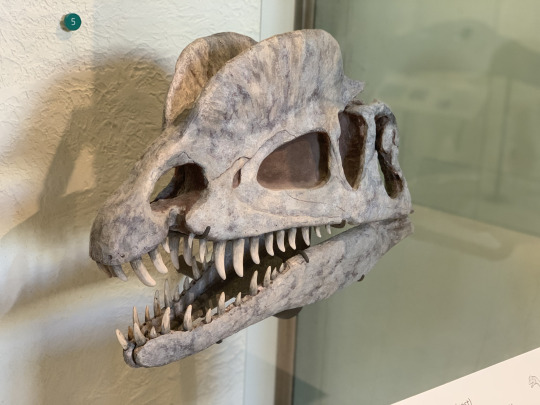
(image: a fossil reconstruction of a Dilophosaurus skull. If you draw paleoart of one of these with the neck frill from Jurassic Park I will personally come to your home to beat you with a paleontology textbook)
Grovyle and Sceptile having red underbellies/lower jaws most likely comes from male lizards who have colorful dewlaps used to attract mates, such as green anoles. Sceptile’s tail looks like a fern or a yew tree. Both fit with the orbs on its back, could be a fern’s spores or yew’s berries. Mega Sceptile’s tail looks a lot like a Christmas tree and the ability for it to be fired like a rocket launcher references autotomy. This is the ability of an animal to shed a body part and regenerate it later. The most famous example of autotomy is arguably the ability of multiple lizards to shed and regrow their tails in response to predators. The anime also gave the whole line ninja-like behavior, with them engaging in swift surprise attacks.
The Turtwig line is my favorite grass starter line and Torterra is my favorite of all the final-stage starters, so I’m excited to get to talk about them. The line are based on terrestrial turtles and tortoises. Turtwig seems to be a box turtle while Grotle and Torterra take on snapping turtle characteristics (though actual snapping turtles are amphibious). Grotle and Torterra also take inspiration from ankylosaurs, especially the twin spikes on their heads and the longer, thicker tails, though they lack an ankylosaur’s thagomizer.

(image: a plastic model of an Ankylosaurus)
Finally, the whole line are based on myths of the world turtle. These myths occur in cultures around the world and state that the earth rests on the back of a giant turtle. The most famous of these myths is the Hindu version in which the turtle is named Akūpāra and is another name for Kurma, an avatar of Vishnu. It is this version that inspired most modern depictions of the world turtle, most famously the version seen in Terry Pratchett’s Discworld series.

(image: the version of the world turtle that inspired Terry Pratchett. Its thought that the version where elephants stand on the turtle is a fusion of two separate myths, one with a turtle and one with elephants)
Another variant occurs in China, where after the four pillars that held up the sky broke, the goddess Nüwa replaced them with the legs of a gigantic turtle named Ao. The world turtle also appears in the Americas, found in multiple Native American cultures from what is now the midwestern and northeastern United States and southeastern Canada, including the Lenape, Haudenosaunee/Iroquois, and Anishinaabeg cultural groups. There are many variations of this version of the story, but a common feature is the world being flooded and multiple animals trying to dive to the bottom to bring up soil so it could be placed on the back of a turtle and grow into new land. Because of this, a common name for the North America amongst those cultural groups is Turtle Island. Torterra is a small version of the world turtle, with only a tree and miniature mountain range on its back, but the intent behind its design is clear. It can even support an ecosystem, with mentions of small Pokémon living on its shell.
The Snivy line have been confirmed by the designers to be based on snakes, with the first two stages being given short limbs to make them look less intimidating to new players. Reiko Tanoue, the line’s designer, says she got the idea for them after reading a picture book that mentions snakes with the appearance of vines. There are various tree-dwelling snakes that this could refer to, though one of my favorites is the green tree python, which has Snivy’s green coloration and certainly could be mistaken for a vine.
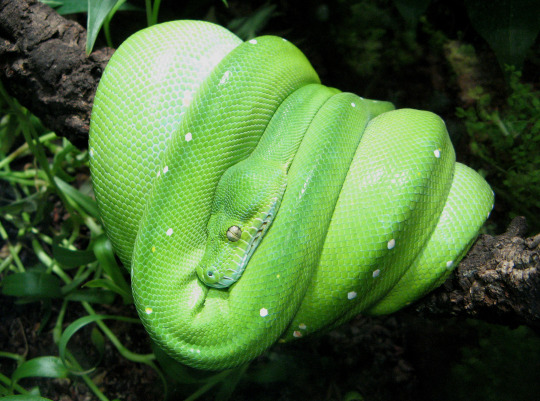
(Image: a green tree python in its signature pose resting on a branch)
The tiny limbs of Snivy and Servine may draw from skinks, lizards known for their relatively small legs. Some species of skink have even lost their legs entirely and developed a snake-like body plan.

(Image: a skink. Note the tiny legs)
The two may also be inspired by fossilized proto-snakes, who were long and serpentine but still has small limbs, or by snakes who are born with one or more legs as the result of a mutation. If Snivy and Servine are skinks, then Serperior could be a legless lizard instead of a snake. Multiple lizard lineages have lost their legs and adopted a snake-like body plan, but can still be distinguished from snakes by a number of different features. Serperior’s ability to paralyze opponents with its gaze comes from two sources. The first is the muth that cobras and other snakes can hypnotize their prey (which is the basis for the move Glare) and the second is the basilisk. Basilisks are legendary creatures from European folklore with the power to kill anyone who makes eye contact with them. While described as “the king of serpents”, many depictions of basilisks make them look more like lizards or monstrous roosters (a result of them getting confused with the cockatrice, another monster).
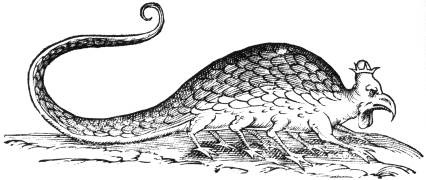
(image: a 1640 woodprint of a basilisk by Ulisse Aldrovandi. I wouldn't be surprised if this version inspired the multi-legged lizard version in Dungeons and Dragons)
Ken Sugimori has confirmed that the Unova starters were all designed with different cultures in mind to reflect the diversity of Unova. The Tepig line were given Chinese motifs, the Oshawott like were given Japanese motifs, and the Snivy line were given “western” motifs. Given that he explicitly cites the character of Lady Oscar from the manga The Rose of Versailles (which takes place in France during the life of Marie Antionette), it’s pretty clear that what he’s referring to as “western” designs are European symbols and heraldry. Specifically, Serperior’s design incorporates the fleur-de-lis (based on a lily) and acanthus leaf motifs (based on acanthus plants).

(image: a fleur-de-lis)
Chespin is the first grass starter to be based on a mammal, something that seems to have started a trend as two of the next three starters are also mammals. They are based on hedgehogs, though I think Chespin also looks a lot like a chipmunk. While normal hedgehogs have spines made of hair, the Chespin lines are made of plant material. Specifically, they are based on chestnuts. More specifically, they are based on the cupule, the green, spiky coating that covers immature chestnuts to protect them from herbivores.

(image: a branch of a chestnut tree, with multiple visible nuts, each coated in a spiky, green cupule)
Cupules are typically green, fitting the color of Chespin and Quilladin. The hard shell is much more noticeable in the middle and final stages, where it might also derive from armored mammals like armadillos and their extinct glyptodon relatives.

(image: a nine-banded armadillo)
The final forms of the Kalos starters are based on the fantasy character archetypes of the warrior, mage, and thief. Chesnaught is the warrior and its armor makes it look like a knight, fitting for a region based on France, the birthplace of chivalry. Its shell is based on medieval armor and a helmet, while its bulkiness, hidden ability of Bulletproof, and stated ability to survive bomb blasts without a scratch are based on bomb suits. These suits are used by people working with explosives to protect themselves and can be considered a type of armor.

(image: somebody wearing a bomb suit)
Rowlet is quite possibly the cutest of all the starters and is based on a barn owl. This family of owls are known for their white, heart-shaped faces that matches Rowlet’s design. Common barn owls have become an introduced species to Hawai’i.
Rowlet is quite possibly the cutest of all the starters and is based on a barn owl. This family of owls are known for their white, heart-shaped faces that matches Rowlet’s design. Common barn owls have become an introduced species to Hawai’i.
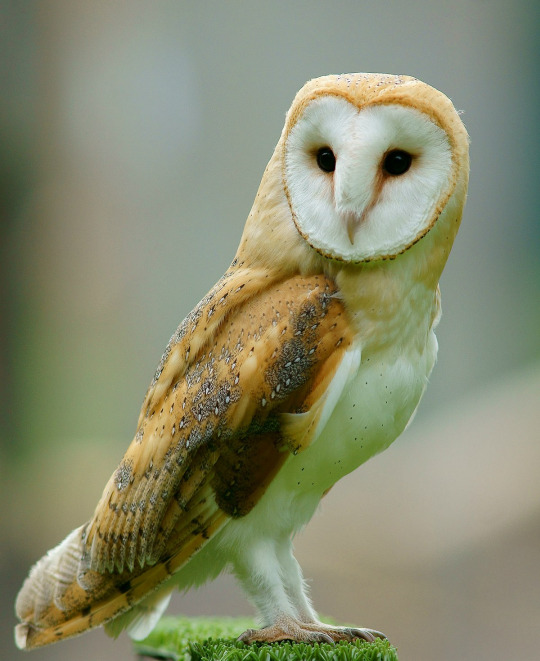
(image: a barn owl currently winning in a staring contest)
Another owl the line is based on is the pueo, which is found only in Hawai’i. I’ll come back to them later as this inspiration really stands out in Decidueye. Dartrix continues the barn owl inspiration but has also become a dandy. The dandy trope is a man who is very devoted to his personal appearance and grooming and is typically a fan of leisure. Dandies are often played for comedy as they are perceived as upper-class twits and due to gender roles assuming that caring about your appearance is a feminine trait. Dartrix certainly is the comedic dandy as the Pokedex points out how it can get so absorbed in grooming that it forgets about other stuff. Decidueye drops the barn owl inspiration in favor of the pueo and the extinct stilt-owls. Stilt-owls are extinct (hence the ghost typing) owls native to Hawai’i that had long legs and while they could fly, they spent most of their time on the ground. Decidueye also has long legs and while it can fly, it loses the flying type. Decidueye also draws from the ‘aumākua, ancestor spirits in Hawaiian mythology that would watch over their living relatives and protect or judge them as needed. They would manifest in the form of animals or inanimate objects and one of the most famous of these physical form is the pueo owl.
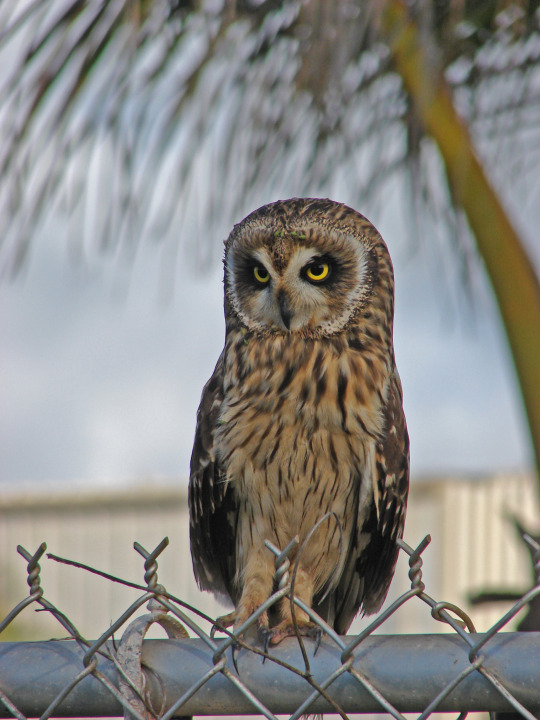
(image: a pueo owl currently giving a Polynesian rat a panic attack)
Decidueye’s archery and green hood and cloak of feathers is a clear reference to Robin Hood. Hisuian Decidueye also draws from mythology, being a reference to the Ainu (indigenous people of Hokkaido, the basis of Sinnoh/Hisui) god Cikap-kamuy, god of owls and the land. Hisui has a lot of references to Ainu culture. Being based on the god of the land might be why H Decidueye is a terrestrial owl, though this may just be a holdover from Alolan Decidueye’s origins. H Decidueye’s coloration is a reference to leaves turning red in the fall. Autumn leaves are also associated with Rōnin, disgraced samurai without masters who would commonly be wanderers, just like H Decidueye. The shape of its head feathers look like kasa, wide-brimmed Japanese hats that samurai are often depicted as wearing.

(image: art of a samurai wearing a kasa. Couldn't find the source)
The Grooky line are primates, with Grooky itself being a monkey. More specifically, it’s a squirrel monkey, new-world monkeys known for their small size and who have similar mouths.

(image: a squirrel monkey mother with its baby on its back)
It using a stick references how primates are the most famous tool-using animals and a stick is a pretty versatile and simple tool if you know how to use it. Macaques use sticks to drum rhythmically on objects as a dominance display, which is pretty close to Grooky using it as a musical instrument. Thwacky looks a lot like a caveman (still a primate) and wears its sticks in its hair like hair sticks. It continues the music theming. Music is a universal human trait and is used for innumerable purposes. Thwacky using its drum beats to rile it and others up indicates it might be based on music used in warfare to inspire the soldiers. Thwacky still has a tail, though it is shorter, meaning it is still a monkey. Rillaboom, on the other hand, is based on a gorilla, an ape (yes, apes are a subset of monkeys but most people think they’re different). Its drumming motif comes to the end where it is now a drummer in a band (more obvious in its gigantamax form). It takes some influence from Japanese taiko drum, but that wild 80s vine hair makes it a pretty obvious reference to rock-and-roll band members. England has a pretty big rock-and-roll culture with famous bands like the Rolling Stones and Led Zeppelin.
Sprigatito is a cute little kitten, likely that of an Iberian lynx, an endangered species of wildcat.

(image: an Iberian lynx rocking some serious mutton chops)
While people like to joke that it’s based on marijuana, the grass inspiration actually comes from jessant-de-lis, a heraldic symbol that is a fleur-de-lis coming out of a cat’s head.

(image: a jessant-di-lis. Artist is Di from Wikipedia)
If Sprigatito is the innocent child, Floragato is a rebellious teenager. Its bipedal stance, dark feet, and its cunning behavior make it a dead ringer for the tales of Puss in Boots. The yo-yo bud it uses normally attaches to the upper left of its chest, making it look like a flower worn in someone’s lapel. Something that fancy seems out for a scoundrel of a Pokémon, but it could be a preview of its next stage’s more upper-class demeanor. The final forms of the Paldea starters are all based on entertainers and Meowscarada is a magician. As such, it is a master of sleight-of-hand, which it uses for its Flower Trick unique move. Its mask draws from those worn in masquerade balls. The masks were used to hide the identities of the attendees and hiding identities is definitely useful for a roguish dark type.
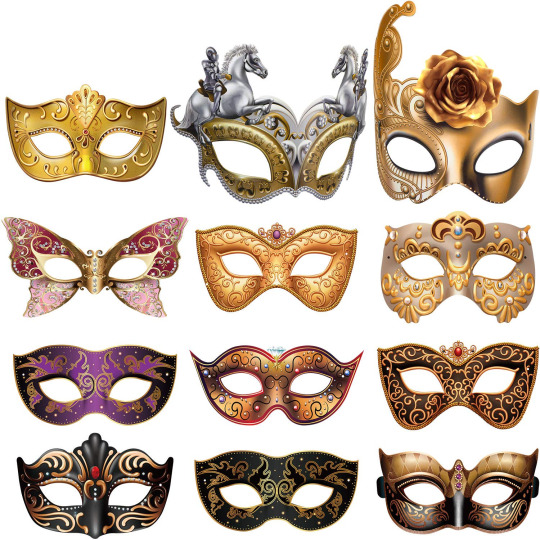
(image: a collection of modern-day masquerade masks)
In fact, both Floragato and Meowscarada take inspirations from picaresque novels, a genre focusing on characters who survive by cunning and trickery. The mask and flower could also come from Mardi Gras and the flowers thrown during it.
#pokemon#pokemon origins#pokemon biology#starter pokemon#grass type#grass starter#bulbasaur#chikorita#treecko#turtwig#snivy#chespin#rowlet#grookey#frog#rafflesia#sauropod#corpse flower#chicory#leaf-tailed gecko#turtle#tortoise#world turtle#snake#chestnut#owl#hawaiian mythology#ainu mythology#squirrel monkey#gorilla
29 notes
·
View notes
Note
your favourite foods? top 3
Õõõõ. Ok. Let's see.
Kama with kefir. Kama, or I guess talkkuna or talqan is a coarsely ground multi grain flour mix. Kefir is a thick, fermented dairy product. Mix them together just so and you have a moderately filling, pleasantly sour summer food. I love sour, fermented shit.
Endives rolled in ham. This one's Belgian. Endives aren't crucifers, but thwy gave a crunchy cabbage-y bitterness to them that I love, especially when it's tempered with fatty pork ham. Dunk that shit in a thick gravy and serve it wuth peasant style mashed milk potatoes (meaning not a smooth mash, just milk-infused, lazily crushed bunch of taters) and you'll cry happy tears while your cardiovascular system cries from cholesterol and carbs. Love it.
Finally, olives. Kalamata are fine, but I prefer lesser olivers in salty brine that are stuffed with either hot peppers or stinky cheeae. Again, I love fermented or briny food.
Bonus: anything from the cabbage family. Mustards, cabbages, anything, I'm a fiend.
Honourary mention: I make pretty awesome pelmeni. They're a simple food, and their nutritional value sucks nuts, but they satisfy your junk food craving. Khinkali are also good dumplings, although I am not a fan of dill because dill belongs in the cilantro family, and cilantro smells and tastes like stale piss to me, and so unfortunately most other plants in that family to too, but you gotta appreciate the 'sooup' that forms in a khinkal. And smother that shit in copious amounts of smetana. They're a chore to make even when you're swift with the dough and cutting out the shapes, but the reward, man.
#so basically eastern european peasant food#I like it hearty#I like it... Well tbh not bland#If anybody thinks northern and eastern european peasant food is bland#Then you're either not seasoning it right or your tastebuds have been destroyed by hot spices
2 notes
·
View notes
